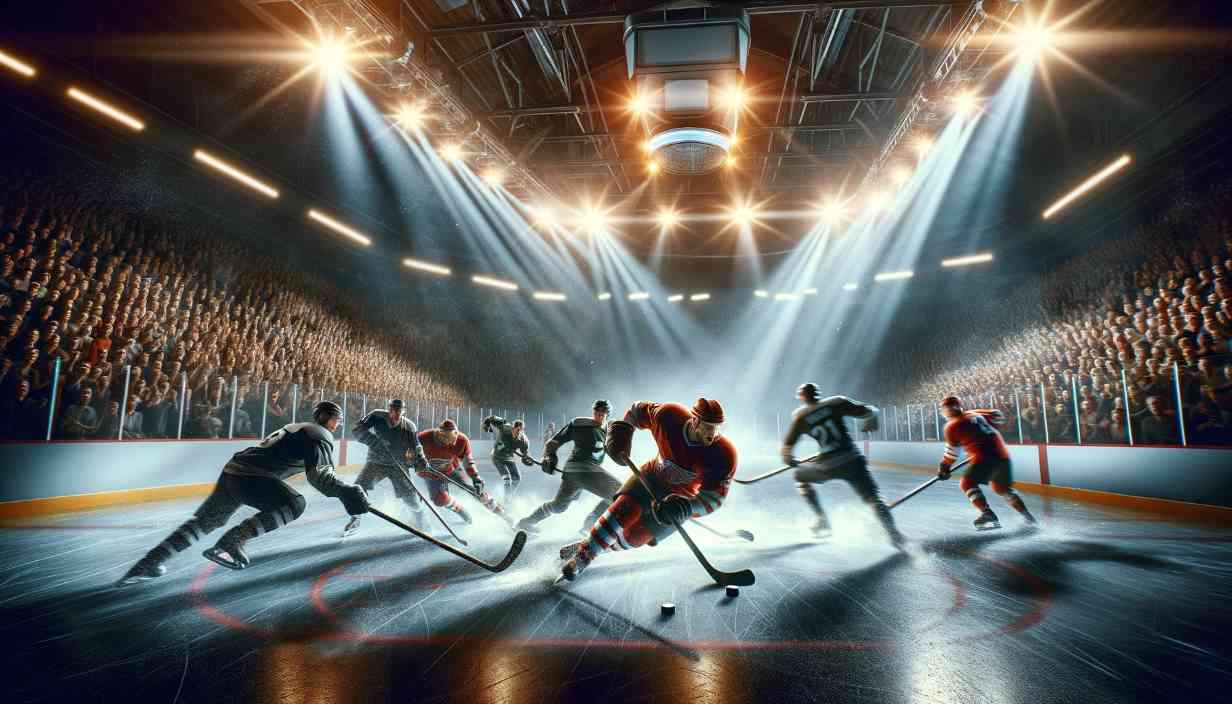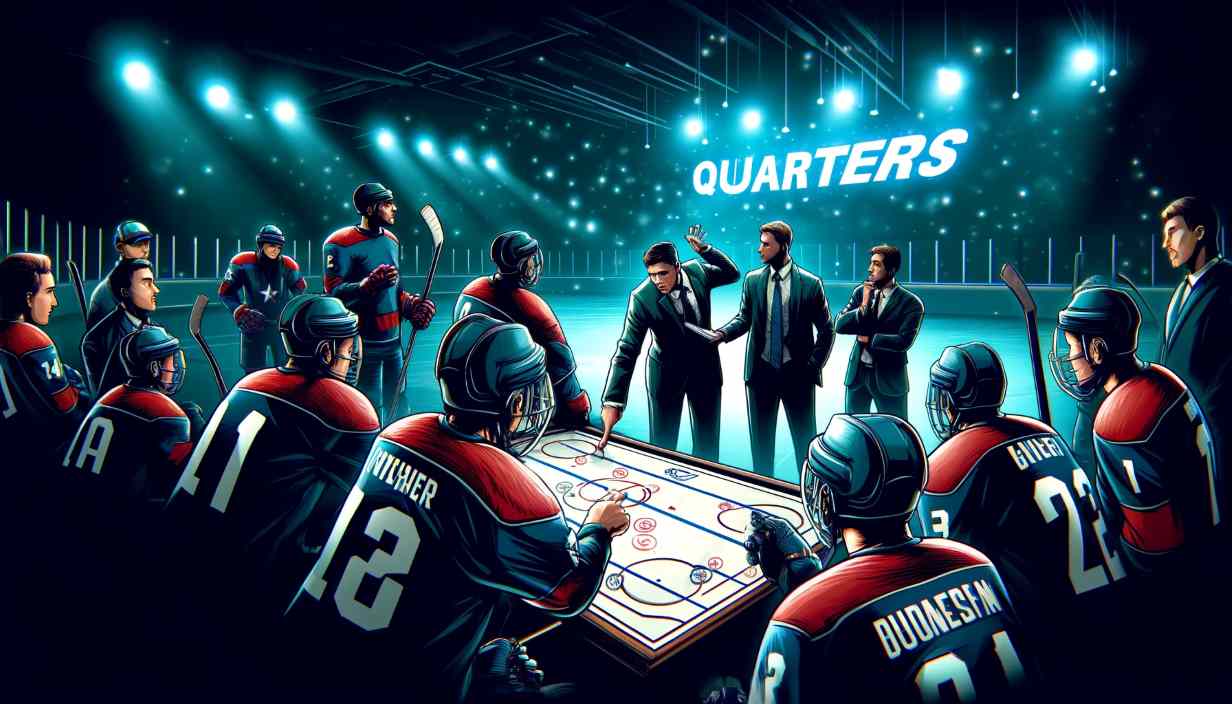With all the skates and sticks flying around on the ice, the idea of “quarters” might not seem to fit with the constant motion that is hockey. Even so, this sport, which is known for having nonstop action, has structured breaks that break up the rhythm. Figuring out the “why” and “how” of hockey quarters can help you enjoy the game more and understand the strategic paths that teams take during a single game. Join us as we illuminate the significance of this oft-overlooked component of hockey.
Quarters on Ice: An Essense of Structure
A hockey match is akin to a symphony, with its crescendos, decrescendos, and moments of harmony and discord. At the helm of this musical analogy lie the quarters, discrete segments that orchestrate the ebb and flow of player effort and strategy.
The Historical Pivot
Hockey’s rules have changed over time, just like many other modern sports. In the early versions, there were halves and no clear breaks. Adding quarters added a new tactical dimension. The reasons for this change have as much to do with how fans feel as they do with how things work on the ice. The pause and re-set that quarters provide are very helpful for keeping people interested and for making commercial breaks run smoothly. However, they also give teams a chance to refocus and reconsider their plans.
How Many Quarters Define Hockey Dynamics?
Despite its structure punctuated by this temporal chess game, hockey is a relentless sport. But how many quarters do players and fans have to anticipate in a given matchup?
Professional vs. Amateur Games
Professionally, the National Hockey League (NHL) and international play feature three periods, whereas amateur levels may sometimes adapt this to two halves. The agony and ecstasy of play are thus distilled into defined chapters, each with its stakes and opportunities. In the NHL, intermissions last 15 minutes.
The Meaning Behind the Minutes
Within these periods and breaks lay opportunities for teams to recharge, re-strategize, and tend to injuries. What do players do in those fleeting moments? Many different actions can occur: coaches may motivate or demand changes from their team while players hurry off the ice to see trainers or take a breather. Whatever the team’s collective or individual needs, quarters are essential for keeping players from injury and exhaustion.
Quarters in Historical Context
As with any sport that mandates pauses at periodic intervals, quarters have become deeply ingrained in fan and player psyches. At the amateur level, two halves may seem natural if one has only played this format, while others advocate for quarters’ fluidity. The evolution of sports is intimately tied to experimentation and audience reception, so it’s impossible to predict what future iterations of hockey may look like.
Insights Begotten
Now, we come to the most important question: why do quarters matter? Surely, they are just useful parts that are meant to keep a game organized. Things on the ice, on the other hand, take on a life of their own when quarters get involved. Being aware of how many quarters you have left to win or avoid losing has a big effect on your mind and body. In the end, we can’t ignore how these seemingly harmless units of time affect how we think about hockey. In the end, this sport is still as unpredictable and fascinating as it was at the start. Take a moment to enjoy the strategic depth and structured beauty that quarters bring to this popular sport as you settle down to watch your next game. The next time you see a player run off the ice during a break, remember that it’s all part of the big picture on the rink.
The Strategic Breakdown
Beyond the numerical delineation of the game, quarters significantly influence the game’s tempo, momentum, and strategic depth. How do teams employ these to their advantage?
Strategic Reset and Momentum Shifts
Quarters are a matter of time and show where the tide might be turning. Whether it’s between periods or halves, the break is often the best time for momentum changes. Players get their energy back, coaches come up with new plays, and fans get ready for the next round, which often feels like a fresh start. Teams can hit the “reset” button at the beginning of each period and come back to the game with more energy.


The Game-Within-the-Game
There are a lot of different ways to play with the time, quarters, and breaks. Coaches must carefully watch how tired their players are, figure out what their opponents’ skills and weaknesses are, and make tactical plans that take these time gaps into account. This means finding a good balance between controlling players’ energy and getting them to work toward specific goals. Both mental and physical strength cause the tension between the game’s long-term goals and its current needs.
A Tale of Two Quarters
Basketball and Hockey share the domain of quarters, yet the narratives they craft in their quarters differ markedly. How does this reflect in game-play and scoring dynamics?
Related Article: Lamelo Ball Shoes
Scoring and Stoppage
Hockey, more fluid and with rarer interruptions, contrasts the punctuated rhythm of basketball. This reflects not just the scoring patterns but the need for relentless endurance. Each sport’s quarter system molds the essence of their respective games. With hockey, the stakes feel higher as each period brings urgency to cement chances while recognizing that no quarter lasts forever.
Playing by the Quarters
For players and fans alike, an intimate knowledge of the importance of quarters can be a substantial advantage. What should one look for when the clock is reset in a hockey game?
Q1 vs. Q2: A Time for Observance
The first quarter often sets the stage, but the second reveals strategies and set courses. It’s the perfect time for audiences to anticipate mid-game dynamics, while for players, it’s the moment to prove adaptability.
The Final Siren
When we think about strategy and structure along with the idea of hockey quarters, it’s clear that these time limits are not just things that get in the way of fluid play but are actually important parts of the game itself. To understand and plan for how a hockey game will play out is to accept and value the break, the chance to think, and the chance to start over that quarters provide. The idea behind it isn’t unique to hockey, but it is deeply ingrained in the sport. When you see a player run off the ice during a break, remember that they’re not just getting help for an injury or getting coaching; they’re also gathering new potential. In the end, a hockey game is a battle of physical strength and mental toughness, and the quarters are a key part of both. Hockey will always have quarters, whether there are two halves in amateur leagues or three periods in professional games. It’s up to the players and teams to make the most of them. So, the next time you watch a game, pay attention to how each quarter goes and enjoy the little details that come with them.






Leave a Reply